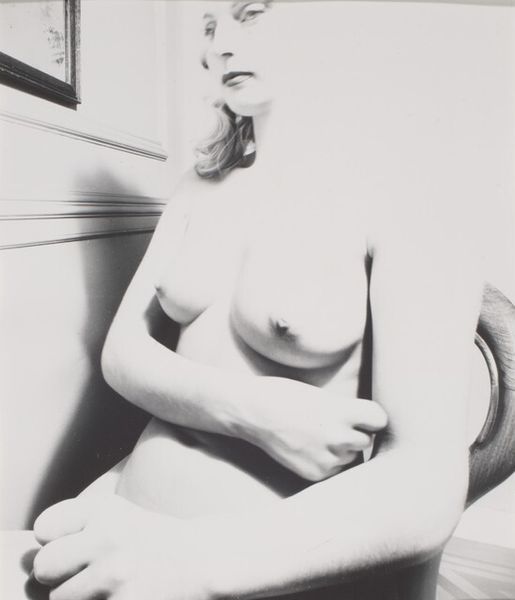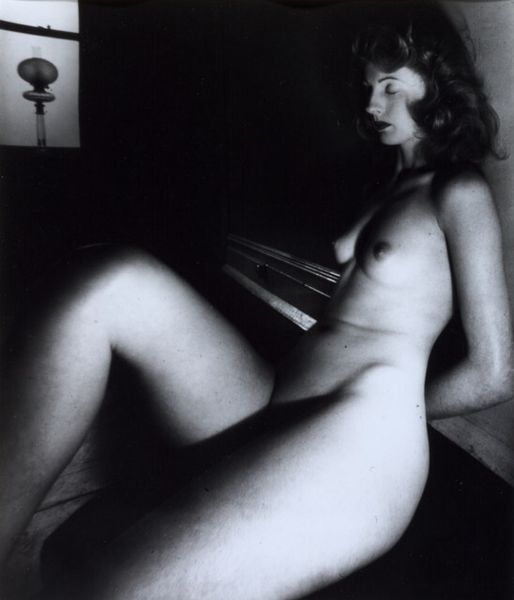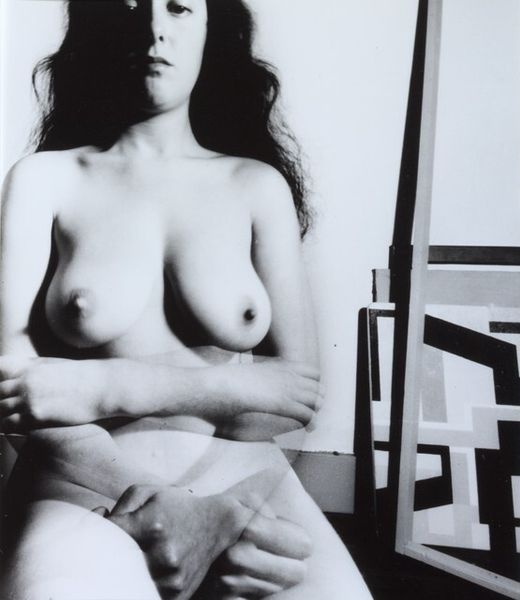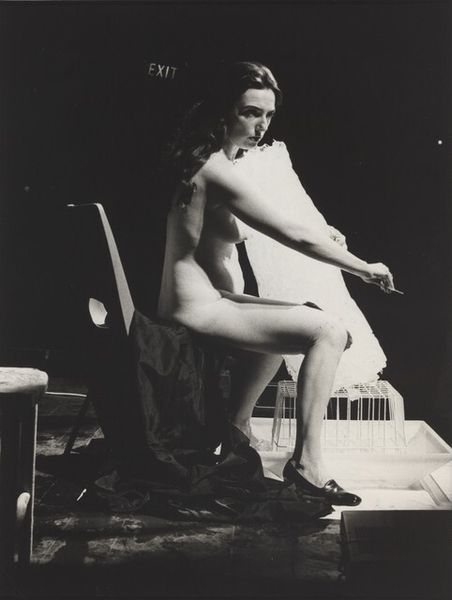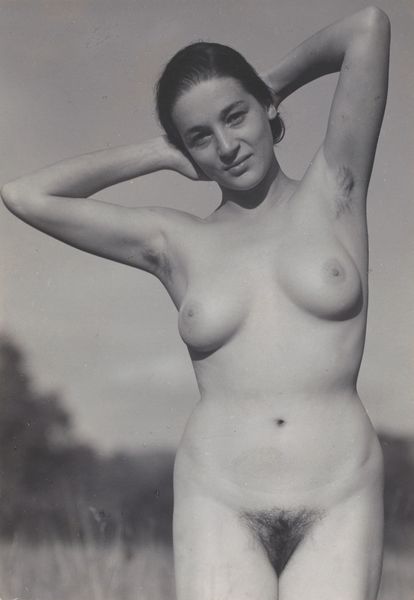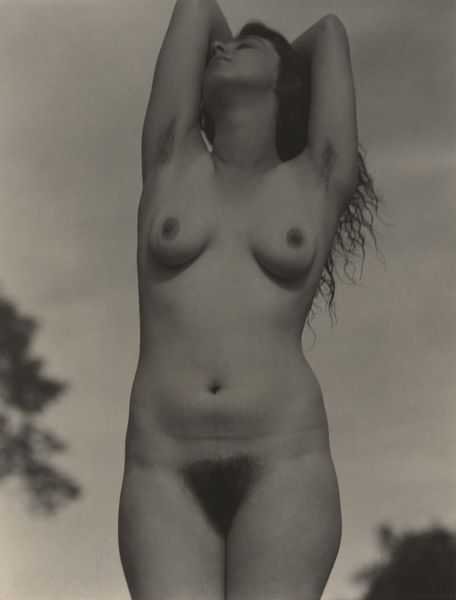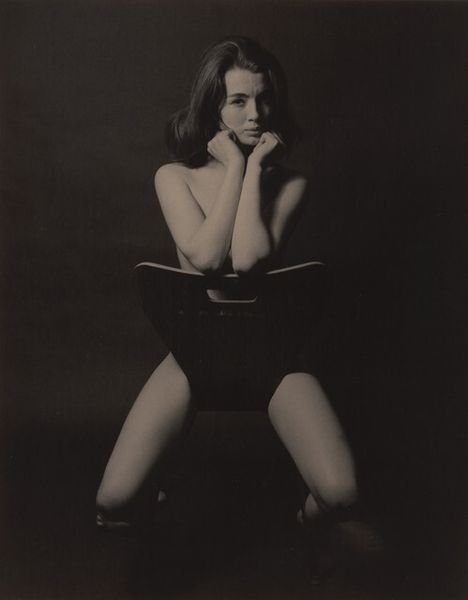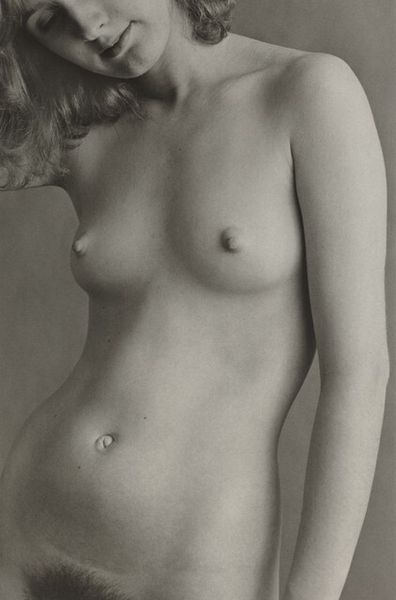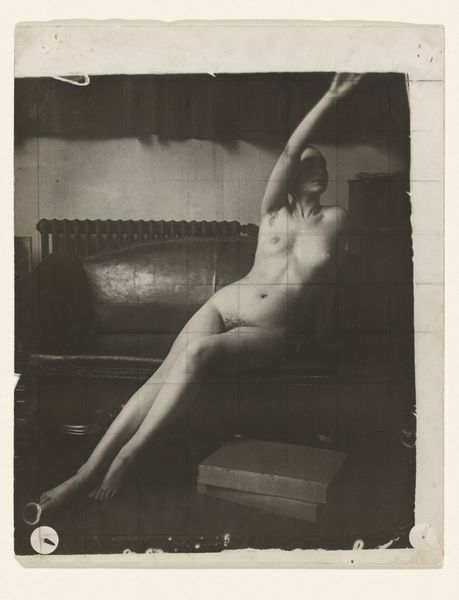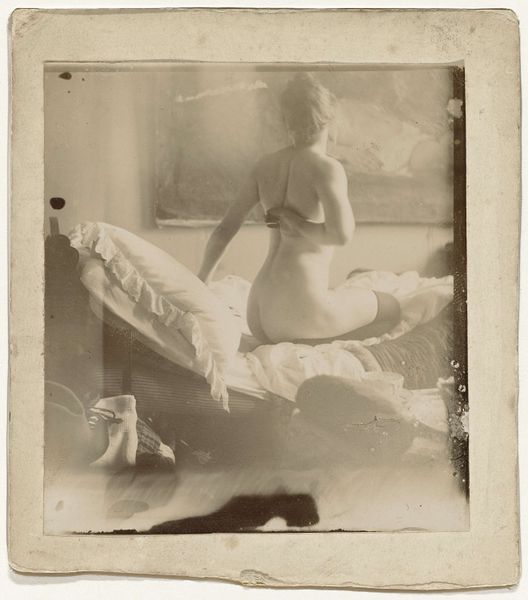
photography, gelatin-silver-print
#
portrait
#
art-deco
#
photography
#
gelatin-silver-print
#
nude
#
modernism
#
realism
Dimensions: image: 22.8 × 19.2 cm (9 × 7 9/16 in.) sheet: 25.4 × 20.3 cm (10 × 8 in.)
Copyright: National Gallery of Art: CC0 1.0
Curator: Here we have Bill Brandt's "London" from 1947, rendered as a gelatin silver print. It’s a stark, almost unnerving nude. What's your first reaction? Editor: I am immediately drawn to the surface quality, the texture. The silver print gives such depth to the shadows, making the scene feel very intimate, tactile even. And that chiaroscuro lighting against the smooth skin... lovely. Curator: Absolutely. Brandt, particularly in his nudes from this period, was heavily influenced by surrealism, playing with perspective and shadow to distort the body, creating a disquieting beauty. It definitely challenges traditional modes of representation in nude photography. Editor: And it’s not just the formal distortion. Consider the staging: The model is seated on what appears to be a fairly ornate chair, almost out of place, positioned next to an imposing door in what seems like an empty room. This draws my attention to issues of display, the contrast between her nakedness and the stark architectural setting. It provokes an immediate thought around access, consumption of space...and the model's compliance. Curator: Precisely. Brandt himself navigated complex social landscapes. He documented the inequalities in British society but was also known for his society portraits. This photograph embodies some of that tension—the vulnerability of the figure placed against the austere backdrop. There is the artifice, but it’s meant for whom and for what purpose? Editor: The high contrast certainly underscores that. The dark shadows nearly consume her figure, drawing out this sense of fragility but, simultaneously, there's something defiant about her gaze. Even the chair, this object manufactured and mass-produced, adds to this dialogue between intimacy and societal pressures, what is natural versus what is structured. Curator: Yes, and it's important to remember the date. 1947, postwar London. A city recovering from devastation, rationing was still in full swing, but the art world was beginning to re-establish itself. A photograph like this, at the time, would have been both provocative and possibly, a symbol of the shifting cultural landscape. Editor: It layers meaning—personal and public anxieties are caught within one silver gelatin print, all from a particular moment of material and societal conditions that is still fascinating to explore. Curator: Indeed. It highlights the fascinating way art is always enmeshed with historical currents and continuously re-evaluated as attitudes evolve.
Comments
No comments
Be the first to comment and join the conversation on the ultimate creative platform.

